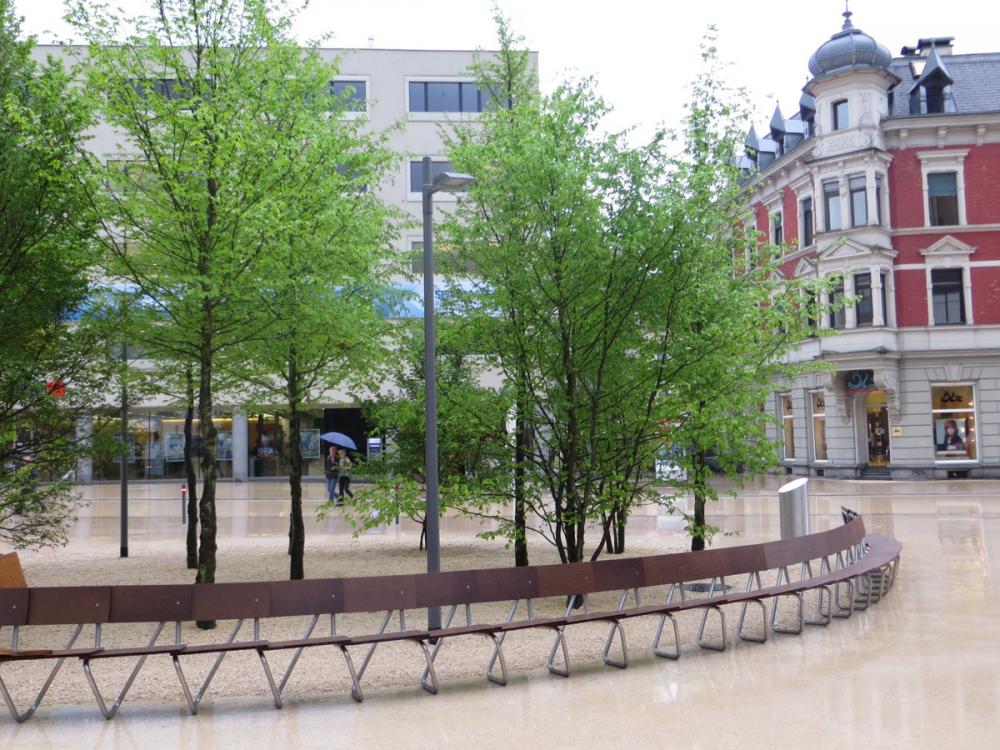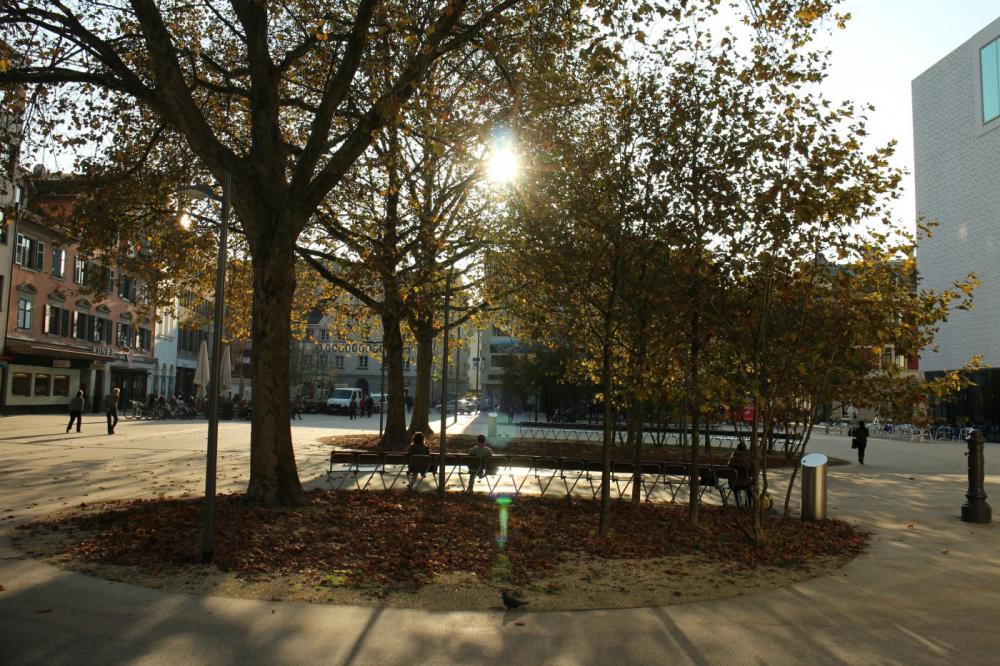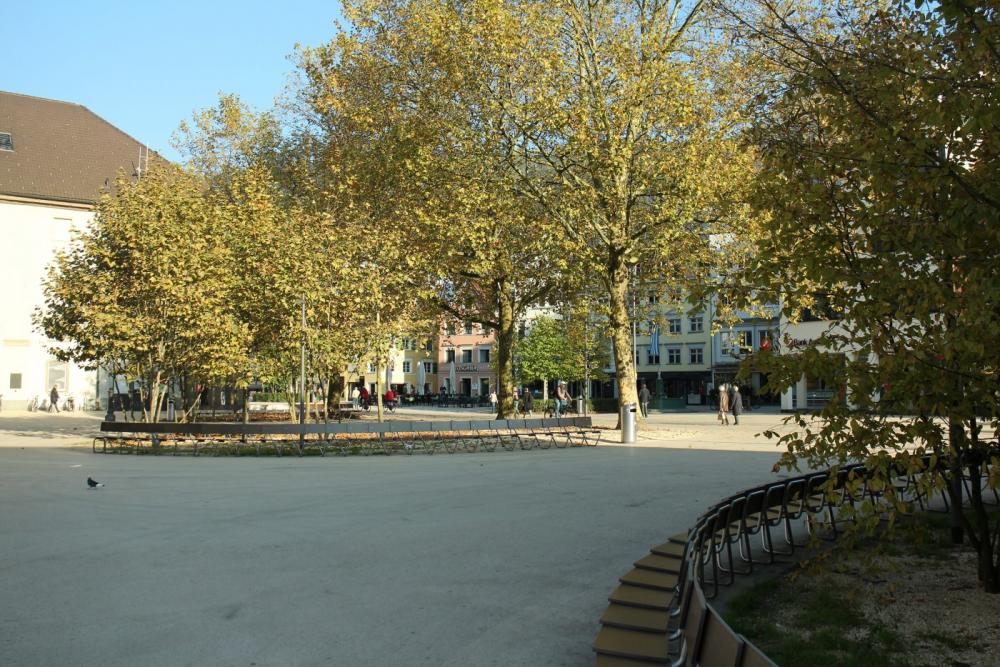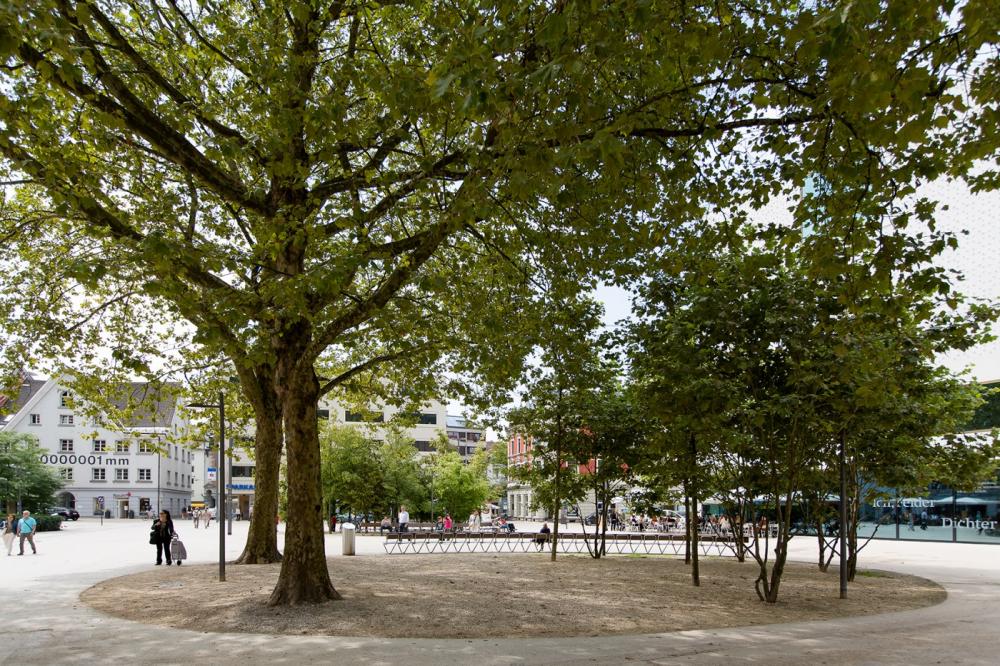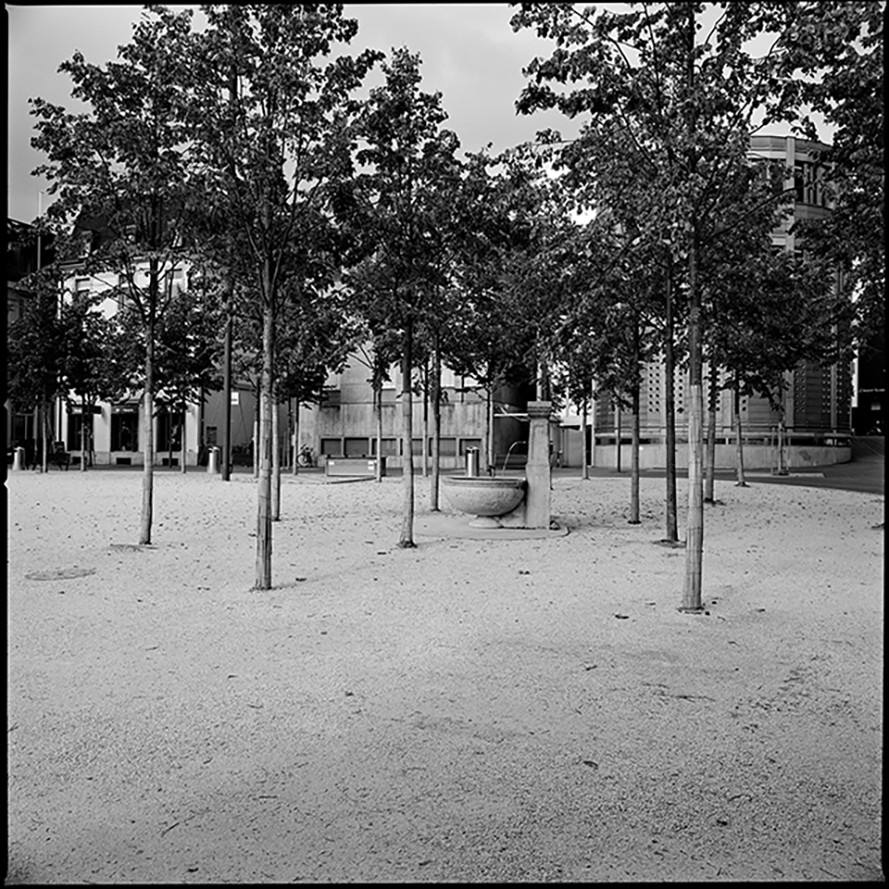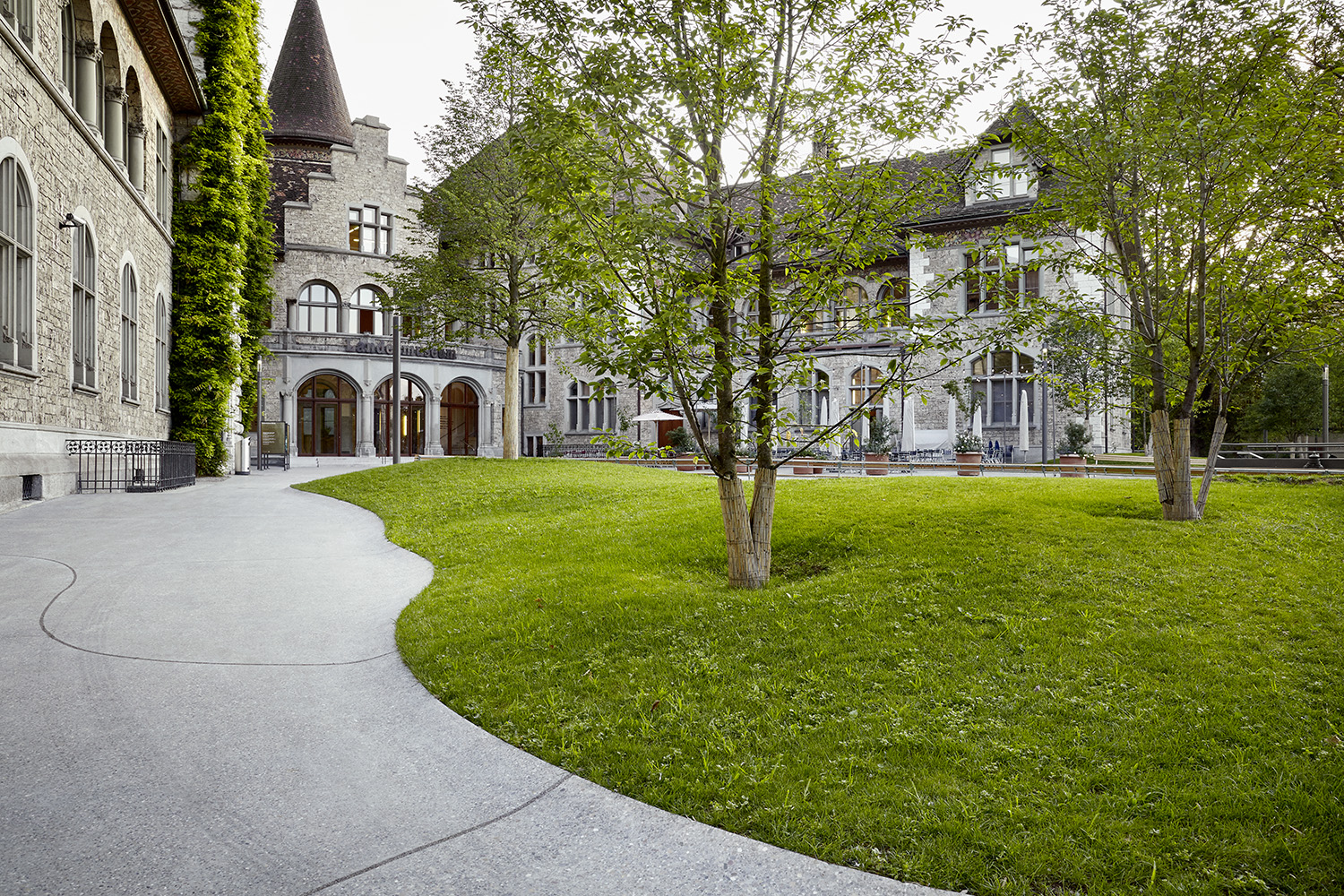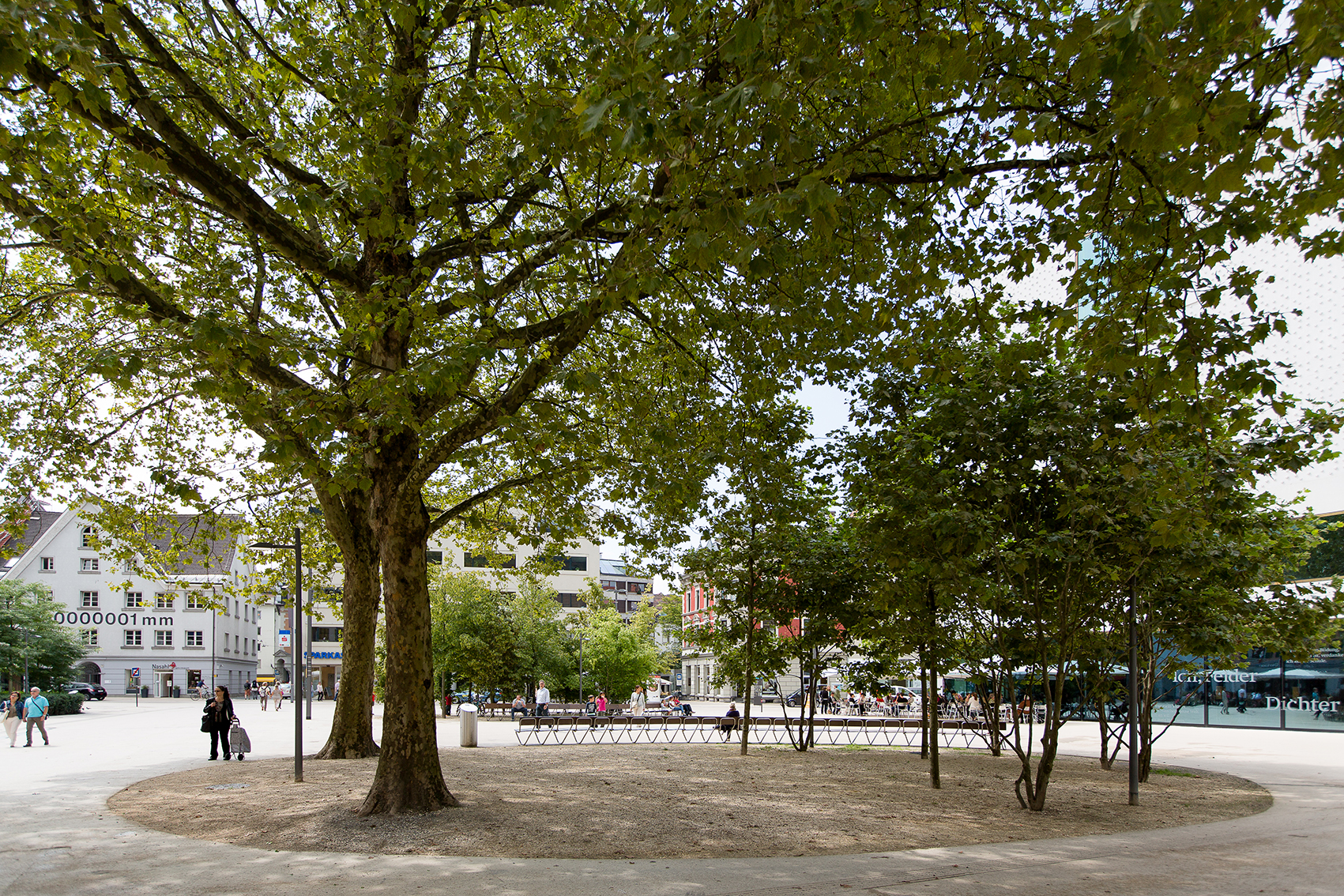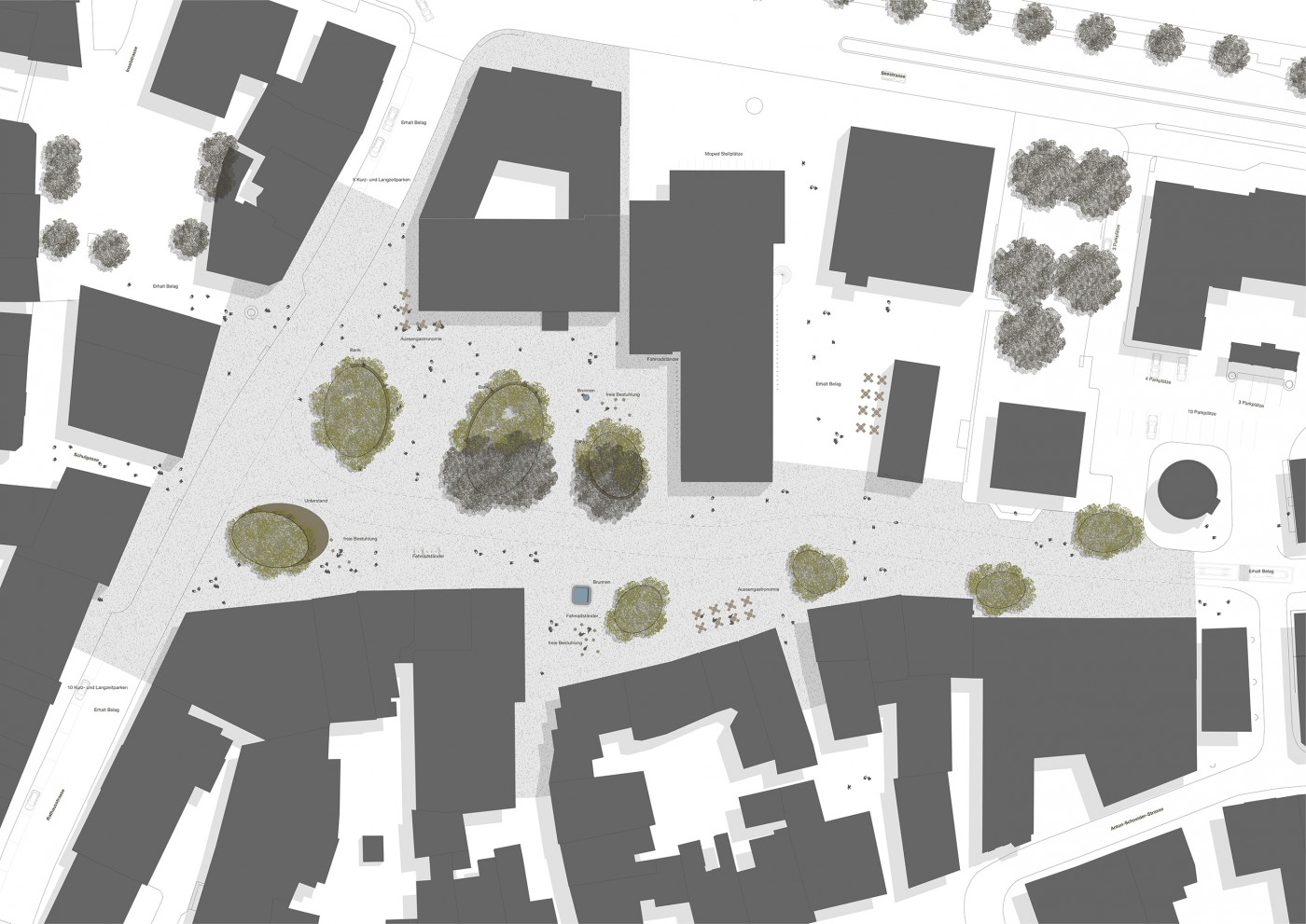
Kornmarkt is the square in front of the new Vorarlberg State Museum and the Kunsthaus Bregenz art museum and forms an attractive open space for neighbouring shops and restaurants. The new Kornmarkt square is primarily a place for the comings and goings of everyday life but also serves as a forecourt for various cultural institutions, a marketplace, an open-air beer garden and café, a concert stage, a disembarkation point for boat arrivals, and a place to sit and watch the hustle and bustle of the town. The overarching design element is the light-coloured surface of high-grade asphalt that is used throughout, creating a sense of continuity.
The organisation of the square, the traffic management, and the creation of zones for events are all achieved not by fixed structures, signs, and markings but to the largest extent possible through the density and arrangement of the vegetation. This vegetation concept leads to an atmospheric zoning of the square that creates and enhances lines of sight down to the lake and into the streets of the old town. The valuable stock of plane trees has been conserved and staged in a new light. Newly planted trees supplement the existing stock and form airy copses that lead across the square and along Kornmarktstrasse.
The various different types of trees produce carefully coordinated sequences of blossom, leaf, and autumnal colouring, as well as an attractive interplay of leaf textures and branch structures. Light and shadow effects evoke changing moods over the course of the seasons and make Kornmarkt into a place that can be continually re-experienced, as if for the first time. The base around the groups of trees has been cut out of the asphalt and filled with a walkable gravel surface, matched to the grain of the asphalt and granting the required degree of permeability. Long curved benches trace out the shapes of the tree-group inlays and automatically guide visitors across the square. Free-standing chairs let visitors experience the square in any way they want to. A new pavilion has been sited near the bus line and its weatherproof roof extends the cover provided by the neighbouring group of trees for anyone waiting for a bus.


